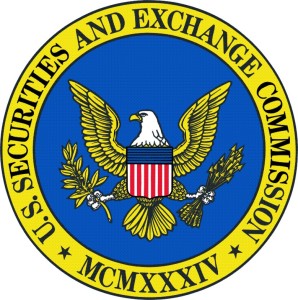 The Security and Exchange Commission, or SEC, is a federal government agency in the United States. Its job is to enforce securities law and thereby regulate the stock exchanges in operation in the country. According to the Security and Exchange Commission, the major focuses of the SEC are providing protection to those who invest, ensuring that market trading is fair and efficient, and creating an environment that encourages the formation of capital.
The Security and Exchange Commission, or SEC, is a federal government agency in the United States. Its job is to enforce securities law and thereby regulate the stock exchanges in operation in the country. According to the Security and Exchange Commission, the major focuses of the SEC are providing protection to those who invest, ensuring that market trading is fair and efficient, and creating an environment that encourages the formation of capital.
Functions
One of the most important functions of the SEC is enforcing laws that dictate proper conduct when it comes to securities exchanges. The SEC can bring down enforcement on both individuals and companies who have been deemed guilty of fraud or other violations such as insider trading. In some cases, the SEC’s enforcement efforts will involve working together with other law enforcement agencies in situations where an individual’s or company’s violations involve a criminal charge.
There are many regulations that the SEC enforces. One of the most widely applicable regulation is the requirement that every public company submit reports regarding finances once quarterly and once annually. Information filed in these reports is made available to investors through the EDGAR database so that they can make informed decisions about investing in a company. EDGAR stands for the Electronic Data Gathering, Analysis, and Retrieval System.
History
The Securities and Exchange Commission was established in 1934 with the passage of the Securities Exchange Act that followed up on the Securities Act of 1933, which is also referred to as the “Truth in Securities Act”. Before the SEC existed, its functions were handled by “blue sky laws” enforced by state governments. These blue sky laws were deemed to be inefficient, and this led to the need for a federal agency to handle the securities trade.
The SEC was not only established to make up for the inadequacies of the blue sky laws, but also to instill a feeling of confidence among the public in capital markets to encourage investment. This was of vital importance for the recovering nation after the ravages of the stock market collapse of 1929.
The Structure of the SEC
A group of commission members is responsible for running the SEC. These commissioners are appointed by the President, and one of them is designated as the chairman. In an effort to keep the commissioners and the SEC overall nonpartisan, a rule was made that there can not be three commissions at the same time that are members of the same political party. As of early 2015, there were four commissions and one chairman.
The SEC is divided into five divisions. These include the Cooperation Finance Division, the Trading and Markets Division, the Investment Management Division, the Enforcement Division, and the Risk, Strategy, and Financial Innovation Division.
The SEC communicates with public companies via comment letters. These letters may be sent out to companies to draw attention to certain issues or to request input from the recipient company. Another form of SEC communication is the no-action letter, which is a letter sent out by a SEC staff member that vindicates an individual or company that previously aroused the SEC’s suspicion.
Related Resource: Investment Banker
The Security and Exchange Commission is an important government agency in the United States that helps facilitate a health environment for investment and trading.
